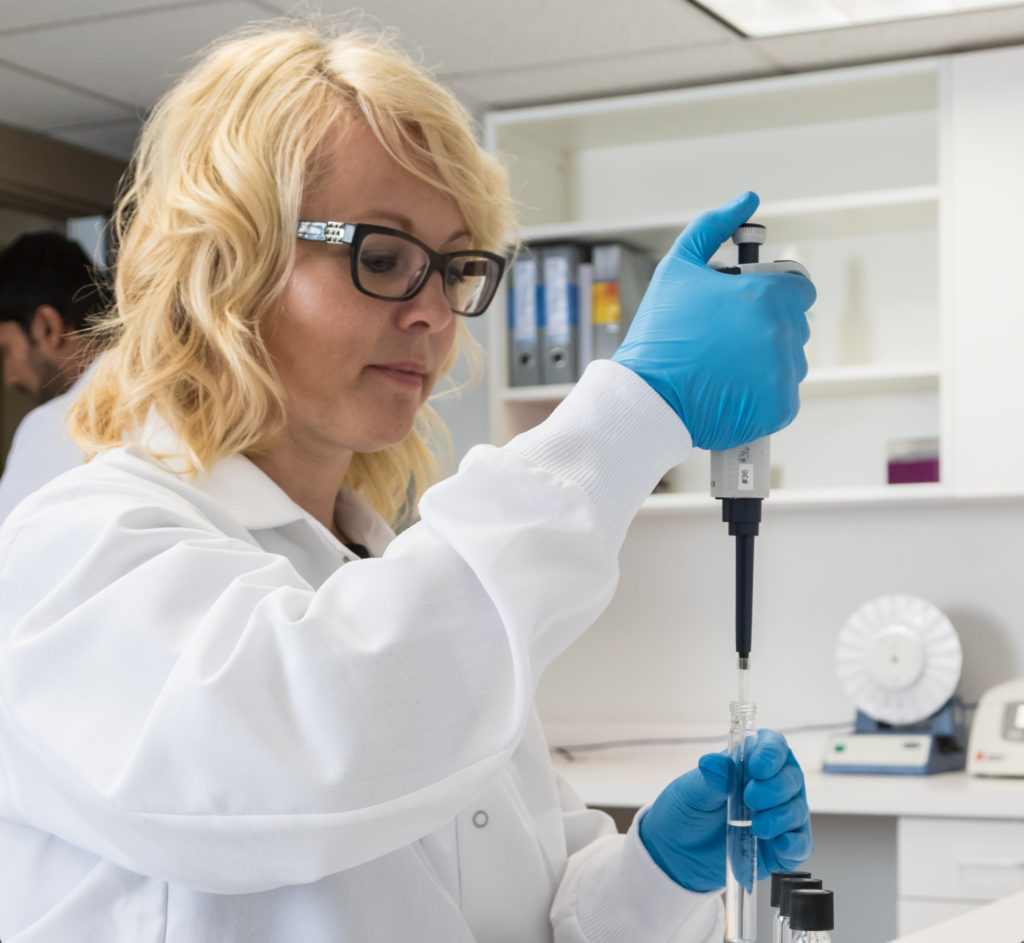Proficiency testing, also known as interlaboratory comparison, is a necessary requirement for almost every regulated facility around the world. Proficiency programs can either be purchased through a certified proficiency provider, or a lab may choose to conduct its own internal proficiency testing program.
Regardless of the program source, the following are a few best practices that will ensure a challenging yet fair approach to routine competency evaluation.
1. Offer Multiple Events Per Year
Most regulations require laboratory staff to be challenged at least once per calendar year. However, due to changes in lab personnel and individual employee responsibilities, offering more than one proficiency event annually is beneficial. This helps ensure that all active members of the laboratory, and their current applicable duties, are being evaluated on a routine basis. Providing multiple testing events establishes a much larger overall picture of laboratory competency rather than just one small snapshot in time.
2. Mimic “Real Life” Scenarios As Closely As Possible
The purpose of proficiency testing is to evaluate both the competency of the staff as well as the laboratory’s processes. If the proficiency test format vastly differs from routine lab practice, it is a rather poor indication of the true lab function ability. As much as possible, proficiency testing should follow the same steps and processes as any routine sample processed by the laboratory.
Multiple proficiency providers offer panels that closely simulate real clinical, water, and food samples. These may include authentic fecal material suspensions, realistic coliform enumeration, and dehydrated food matrices. Choosing the most appropriate proficiency panel for the laboratory should involve a thorough comparison between existing lab processes and the various market offerings available.
 3. Utilize Mixed Cultures
3. Utilize Mixed Cultures
In the spirit of “real life” scenarios there could be nothing more realistic than receiving a mixed culture sample. Wouldn’t it be wonderful if the suspected target organism was the only strain to ever recover? As much as lab techs around the world would love to collectively dream, this is rarely, if ever, the case.
Challenging proficiency by using panels that include both normal background strains, as well as the target organism, is an ideal method of evaluation. Multiple strains can be pooled to simulate almost any realistic laboratory scenario. For example, more than one target organism, more than one background organism, or any combination in between.
4. Don’t Forget The Negative Samples
A negative proficiency sample can easily be considered the least glamorous thing to challenge, and for this reason it can often be overlooked. However, a negative result is usually the primary finding for a majority of facilities thus actually making the negative detection one of the most realistic scenarios. If laboratory staff falls into the routine habit of “expect to detect” every time the proficiency samples are distributed, it can be considered a highly unrealistic evaluation. Offering a routine negative sample should always be considered with each proficiency testing event.
5. Rotate Organisms

They say variety is the spice of life, and nothing could be truer when dealing with living microorganisms! Proficiency offerings should strive to challenge the lab staff with as much strain variety as applicably possible. Setting up the same exact strain of organism and running it through the same exact testing processes for every proficiency event can predictably lead to a monotonous expectation of what will (or will not) be detected each time. An effort should be made to provide a variety of species/serovars within the genus, various culture collections, and a range of enumeration concentrations whenever possible. Even these slight variations can offer a bit of unpredictability in basic strain morphology and biochemical reactions. Ideally, a significant amount of time should pass before repeating a proficiency strain.
6. Learn From Failures
Failing a proficiency test is never a desired outcome, but it will inevitably happen from time to time. The most constructive way to handle a failure is to use the opportunity as a way to identify future improvements in processes or personnel. Every effort should be made to troubleshoot the root cause of the failure. Was a basic test step considered “so routine” that it was not included in the formal procedure, thus resulting in a newer staff member accidentally omitting the step? Has it been a significant amount of time since an employee conducted the specific test in which they failed? They may positively benefit from continued education or refresher training. Time spent investigating an internal proficiency failure is never time wasted. Rather, it only increases the likelihood of making just the right improvement so that future events will be a guaranteed success!
 7. Samples Should Be Blind
7. Samples Should Be Blind
It almost goes without saying that there should be little to no indication of the proficiency panel contents when it comes to testing time. There is always the need for a slight nod in the right direction in order to ensure that the correct laboratory process is challenged. However, by no means should the panel outright indicate which exact organisms may or may not be present. Blind proficiency labels using arbitrary numbers, letters, or any combination of details outside of specific strain information is ideal. This allows for a more authentic challenge of the full laboratory processes rather than providing the ability to jump ahead to more specific tests required for the strain listed on the label.
8. Strive For Routine Treatment
There is no doubt that proficiency time can be a bit stressful and nerve-wracking. There is pressure to pass the challenge or be faced with the consequences of individual failure. This can often result in proficiency samples being given “the royal treatment.” All formal procedures are opened and followed to a T; the sample is doted on with extra time and attention. However, this is rarely the case in regular day to day samples. Encourage a more relaxed approach to proficiency testing by offering multiple events per year so staff can become more comfortable with the practice. Lab managers should be patient, understanding, and reassure staff that a one time failure is not an immediate path out the door. Be open to opportunities for retraining or individual coaching as appropriate.
9. Reduce Variables
 Maintaining control over as many variables as possible keeps proficiency testing fair across all staff members, or even across multiple lab sites within the same company. This can mean things such as utilizing the same lot number of organisms for each participant, including some of the basic necessities in the proficiency kit (like hydration fluid), or controlling the amount of time given to complete the challenge. The more variables that can be eliminated, the easier it will be to troubleshoot a failure should one occur. If all participants are using the same vendor of materials, proficiency samples, and testing processes, the only true factor determining overall laboratory competency should be the individual employees.
Maintaining control over as many variables as possible keeps proficiency testing fair across all staff members, or even across multiple lab sites within the same company. This can mean things such as utilizing the same lot number of organisms for each participant, including some of the basic necessities in the proficiency kit (like hydration fluid), or controlling the amount of time given to complete the challenge. The more variables that can be eliminated, the easier it will be to troubleshoot a failure should one occur. If all participants are using the same vendor of materials, proficiency samples, and testing processes, the only true factor determining overall laboratory competency should be the individual employees.
10. Consider A Proficiency Provider
If incorporating all of these factors into an internal proficiency program seems overwhelming, it’s because it definitely can be! With all of the crazy day to day requirements that exist in labs around the world, there is rarely extra time or personnel left over at the end of the day to focus on building a solid internal proficiency program. Conducting any form of proficiency testing is definitely better than doing nothing at all, but be honest, could it be better?
There is no shortage of certified proficiency providers to choose from who encompass all practices including chemistry, immunology, and microbiology. Considering enrolling through a proficiency provider that can offer all the various panels needed for a thorough lab evaluation is definitely a solid investment. Once established, the laboratory can truly focus on the most important part of proficiency testing – a passing score!






0 Comments
Trackbacks/Pingbacks